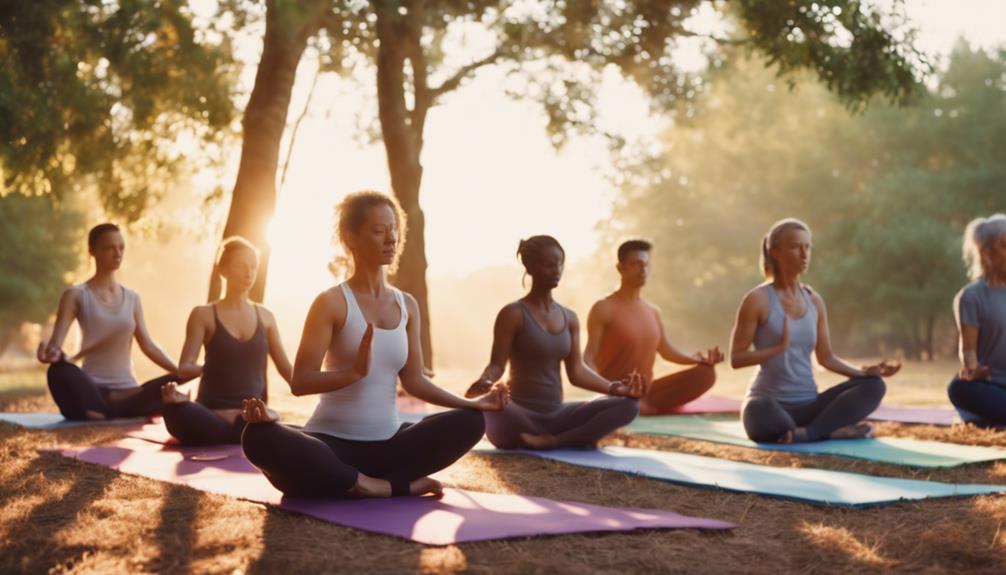Kinderyoga

“`markdown
The Benefits of Kinderyoga: A Comprehensive Guide for Parents and Educators
What is Kinderyoga?
Kinderyoga refers to a specialized form of yoga designed specifically for children, typically aged between 3 and 12 years old. This practice incorporates playful and imaginative elements to engage young minds while promoting physical, mental, and emotional well-being. Kinderyoga usually includes fun poses, breathing exercises, and mindfulness techniques that resonate with children’s natural curiosity and energy. Through kinderyoga, children not only learn the basics of yoga but also develop essential life skills such as focus, self-regulation, and empathy.
The Importance of Physical Activity for Children
In an increasingly sedentary world, promoting physical activity among children is more essential than ever. Regular exercise, including kinderyoga, plays a critical role in children’s health by improving their physical fitness, enhancing motor skills, and reducing the risk of childhood obesity. Kinderyoga introduces children to various poses that strengthen muscles and improve flexibility. These benefits are vital for developing a healthy body and instilling a lifelong love for movement. With kinderyoga, children can enjoy physical activity in a fun and engaging way, making it more likely they will continue to be active as they grow.
How Kinderyoga Enhances Emotional Well-being
Kinderyoga is not just about physical movement; it also significantly contributes to emotional well-being. The practice encourages self-awareness and emotional regulation, teaching children how to identify and express their feelings effectively. Through breathing exercises and mindfulness practices, kinderyoga helps children learn how to manage anxiety and stress. As they engage in these activities, they develop resilience and a greater sense of self-confidence. This emotional intelligence is crucial for building healthy relationships and coping with life’s challenges as they grow older.
Building Social Skills Through Kinderyoga
Kinderyoga is often practiced in group settings, providing an excellent opportunity for children to develop social skills. When children participate in kinderyoga classes, they learn to cooperate, share, and communicate with their peers. These interactions foster a sense of community and belonging, which is essential for their social development. Additionally, kinderyoga often includes partner poses and group activities that encourage teamwork and trust-building. By engaging with others in a safe and supportive environment, children can enhance their social skills while having fun.
Boosting Concentration and Focus with Kinderyoga
In today’s fast-paced world, many children struggle with attention and concentration. Kinderyoga can be an effective tool for boosting focus and cognitive skills. The combination of physical movement, breath awareness, and mindfulness techniques helps children learn to center their thoughts and stay present in the moment. As they practice kinderyoga regularly, children can improve their attention span and develop better concentration skills, which are beneficial not only in yoga but also in academic settings. This enhanced focus can lead to better performance in school and other activities.
Fostering Creativity and Imagination Through Kinderyoga
One of the unique aspects of kinderyoga is its ability to tap into children’s creativity and imagination. In kinderyoga classes, teachers often incorporate storytelling and playful themes into the practice. This approach encourages children to visualize and embody different characters, animals, and elements of nature through various yoga poses. By integrating creativity into the practice, kinderyoga not only makes the experience enjoyable but also nurtures children’s imaginative abilities. This creative expression is vital for cognitive development and can enhance problem-solving skills as children learn to think outside the box.
Tips for Practicing Kinderyoga at Home
Practicing kinderyoga at home can be a wonderful way to reinforce the benefits of the practice. Parents can create a calming environment by setting aside a dedicated space for yoga, free from distractions. Incorporating simple poses that children can easily learn is essential; resources like online videos or books specifically for kinderyoga can offer guidance. Additionally, parents can encourage their children to express their feelings and thoughts during and after practice, fostering open communication. Making kinderyoga a fun family activity can also strengthen bonds while promoting healthy habits.
Finding Kinderyoga Classes Near You
If you’re interested in introducing your child to kinderyoga, many studios, community centers, and schools offer classes specifically tailored for children. Look for programs that emphasize a fun and engaging approach, ensuring that your child will enjoy the experience. Additionally, consider asking for recommendations from friends or checking online resources and social media groups focused on children’s activities. Many yoga studios also offer trial classes, allowing you and your child to explore different styles and instructors before committing. Remember, the goal is to find a supportive and nurturing environment that aligns with your child’s interests and needs.
By embracing kinderyoga, you can provide your child with valuable tools for physical, emotional, and social development. This holistic approach to yoga is designed to nurture the whole child, equipping them with essential skills they will carry throughout their lives. As you consider introducing kinderyoga into your child’s routine, remember that the most important aspect is to make the experience enjoyable and rewarding.
“`
Tummee Yoga